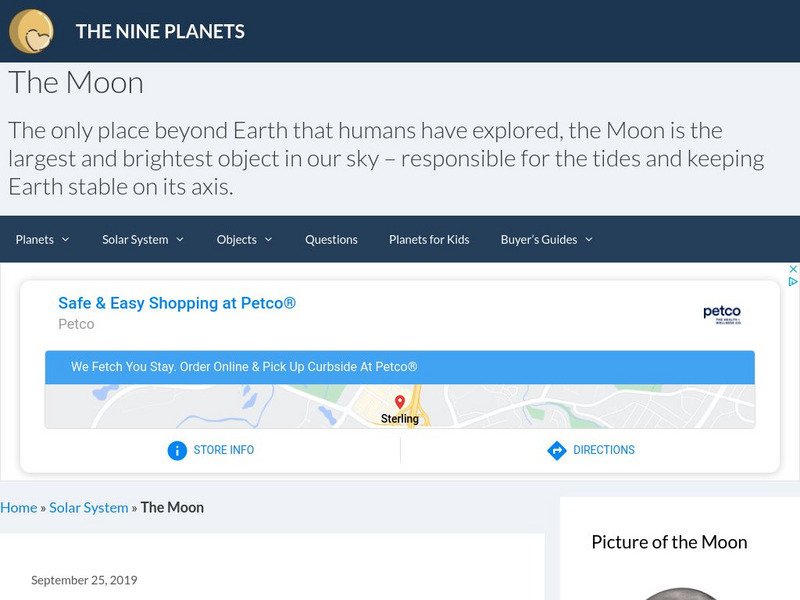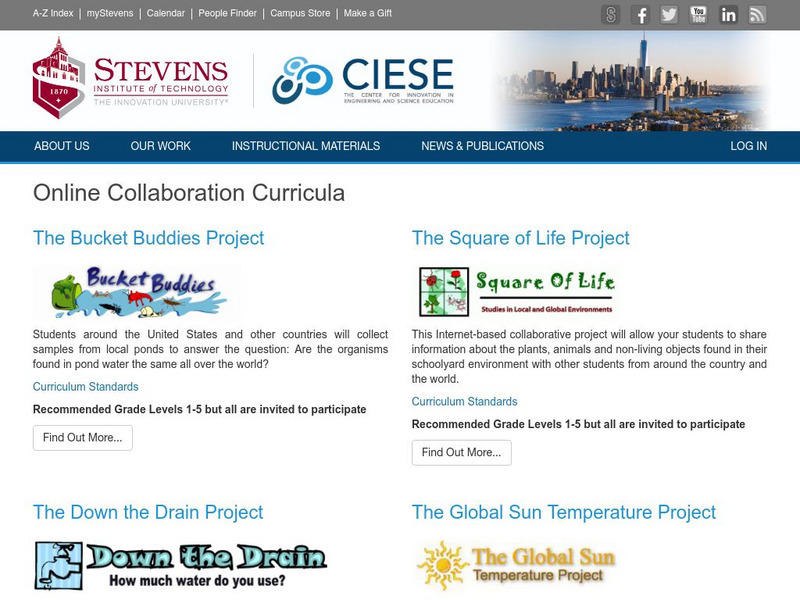Alabama Learning Exchange
The Moon's Craters
Fifth graders investigate the formation and size of impact craters. In small groups, they conduct an experiment that involves dropping marbles into flour and measuring the impact from various heights and discussing their hypothesis and...
Curated OER
Mud Splat Craters
Students simulate crater formation using mud. In this earth science lesson, students identify the features of a crater. They explain how the force of impact affect the crater's appearance.
Curated OER
Impact Craters
Students investigate the factors affecting the size of a crater. In this space science lesson, students collect data from the activity and graph them. They explain how velocity of impact relate to crater size.
Curated OER
Comet Cratering
Students measure craters. In this crater activity, students make a flat surface of flour and drop different size craters from different heights. They measure each of the craters to see how height, size and mass affects the crater size.
Nine Planets
The Nine Planets: The Moon
Explore the mythology, structure, observational history, gravitational force, and orbit of Earth's Moon.
Center for Innovation in Engineering and Science Education, Stevens Institute of Technology
Ciese: Collaborative Projects
Using a variety of science topics, these projects link your class with classes around the world in data collection and analysis. There are projects recommended for all grade levels. Begin dates and end dates are listed to help in...
Other
Planetary Society: Relative and Absolute Ages in Histories of Earth and the Moon
A lengthy scholarly article that discusses the geologic time scale, its history of development, age-dating events that occurred in different eras, and how absolute and relative dating are used to assess the ages of the Earth and Moon....
Planetary and Space Science Centre
Passc: Earth Impact Database
A comprehensive site which allows you to do research on any impact crater found on the Earth. You can sort them by name, size or age. The site also contains maps of the continents marked with the locations of each crater. Satellite...
Smithsonian Institution
National Museum of Natural History: Global Volcanism Program: This Dynamic Planet
Interactive activity that allows the learner to make their own regional map using layers of their choice such as volcanoes, craters, plate tectonics, or earthquakes. This map of the Earth zooms in and out, highlights essential processes,...
NASA
Nasa: Jsc Digital Image Collection: Earth From Space
Hundreds of amazing images of Earth from space. This site provides images of geographic regions, landscapes, cities, habitats, distinctive features, and much more. These images are easy to access and are of amazing quality.
University of Hawai'i
Exploring Planets in the Classroom: Impact Craters
Visit this site for a lesson plan on impact craters. Using this simple hands-on activity, students further develop their understanding of how impact craters are formed. A brief introduction about impact craters is given along with some...
Teachers TryScience
Teachers Try Science: Comet Cratering
Use marbles to discover how comets and asteroids make impact craters. This hands-on experiment is easy to do and gives you many variations to try. Included are links to additional information.
NASA
Nasa: Welcome to the Planets Venus
NASA offers a photo gallery of Venus images. Each image includes a detailed caption describing what the image is of, and this caption is also available in streaming audio.
Planetary and Space Science Centre
Earth Impact Database: Kara
This resource lists basic data for the Kara impact crater. This data includes facts on the crater's exact location, diameter and age.













